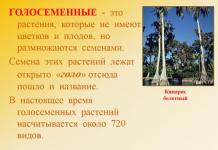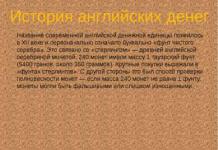Pasta: history of origin, types, composition, calorie content and benefits. How to choose high-quality and healthy pasta.

Pasta is a dried dough product that is kneaded with water and flour. In many countries, another name that came to us from Italy is common - pasta. Wheat flour is used, less often buckwheat and rice.
According to statistics, pasta is most loved in Italy, Venezuela, Greece, Tunisia, Sweden, Switzerland, the USA and Russia. But if the average Italian eats about 26 kg of pasta per year, then a Russian can handle only 6 kg.
Origin story
Most people associate pasta with Italian cuisine, but China is considered the real birthplace of the popular product: it was from there that the merchant and traveler Marco Polo brought the secret of making pasta. True, scientists are still arguing where pasta appeared first - in Greece, Egypt, China, or still in sunny Italy. Be that as it may, it is impossible to imagine Italian cuisine without pasta; it is in this country that so many of its varieties appeared.
Today, store shelves are overflowing with pasta of various shapes, colors and sizes, from domestic and foreign manufacturers. But how not to get lost in this diversity? Is it possible to purchase a high-quality product, since pasta is often accused of being high in calories and completely lacking beneficial ingredients? This is what we will try to find out, and we will start with the classification of pasta.
Types of pasta, benefits and calorie content
There are several criteria by which pasta is classified: the main ones are the composition and shape of the product. The taste, appearance, beneficial properties and cost of the finished product depend on the raw materials and technologies that were used in its manufacture.

1. Shape
Based on their appearance, pasta is divided into 5 volumetric groups: long, short, small, curly (bows, shells, horns) and filled pasta. Separately, it is worth highlighting pasta made from wholemeal flour, intended for dietary nutrition: usually such pasta has a brownish-gray color.
2. Composition
The classic pasta recipe is simple - water and flour. But why then are some pasta healthy, while others are harmful to health and contribute to weight gain?
The quality and usefulness of pasta depends, first of all, on the flour that goes into their production. According to the standards in force in Russia, there are three groups of pasta: A, B and C. The first category includes pasta made exclusively from wholemeal flour: it is obtained from durum wheat (most often the durum variety). Class B pasta is made from glassy flour of soft grains. Group B includes products made from baking flour.
Pasta that belongs to category A is the healthiest and lowest in calories. They retain vitamins and minerals, provide the body with fiber and complex carbohydrates - substances that help get rid of toxins and keep you feeling full for a long time.
The flour from which class B pasta is made is devoid of most beneficial components. In addition, it contains a lot of harmful amorphous starch. And the baking flour that goes into the production of category B pasta is a completely purified, and therefore completely useless, product.
In some European countries, particularly in Italy, pasta is made only from healthy durum varieties of cereals, and this is monitored at the legislative level. Everything else is considered counterfeit. It's a pity that our government is not so strict about pasta.
The benefits of durum wheat pasta

Whole grain pasta retains all the beneficial properties of cereals. Thanks to complex carbohydrates that break down slowly, maintaining a feeling of fullness for a long time and not being deposited as fat in “problem areas”, they are safe for your figure. People get fat not from pasta, but from the additives with which they are eaten - from high-calorie sauces, butter, cheese and mayonnaise.
Pasta made from durum wheat is a source of natural fiber, vegetable protein, vitamins E and group B. Among the trace elements they contain iron, manganese, potassium, and phosphorus. Vegetable protein in pasta is a supplier of tryptophan, an amino acid involved in the production of the “happy hormone” serotonin. That's why it's good to eat pasta when you're feeling blue.
Calorie content
100 g of dry durum wheat pasta contains about 330-350 kcal. Boiled pasta has a lower calorie content - 100-125 kcal per 100 g of product; nutritional value: carbohydrates – 70 g, proteins – 10 g, fats – 1 g per 100 g of product.
What to look for when buying pasta?
1 package
High-quality pasta is never sold by weight. Tightly sealed, sealed packaging with a transparent window through which you can evaluate the appearance of the product is a sign of good pasta.
2. Composition
Flour + water - there should be nothing else in the composition of real pasta. The following inscriptions on the label indicate the high quality of pasta: “pasta di grano duro”, “pasta di semola di grano duro”, “exclusively from durum wheat”, “class A, highest grade” (GOST 875-92 in Russia) .
3. Structure
High-quality pasta has a smooth, as if polished surface. The products are whole, with a “glassy” fracture, without broken specimens, crumbs or flour in the packaging. Wholemeal pasta bends easily, but is difficult to break.
4. Color
Healthy pasta has a smooth, natural creamy, golden or amber-yellow translucent hue. Snow-white, poisonous yellow or dirty gray color indicates a violation of production technology, the addition of low-quality flour, and the use of artificial colors to disguise low-quality raw materials.
As for colored paste, it can only be useful if it contains natural dyes (beets, carrots, spinach, turmeric, tomatoes, cuttlefish ink). A small number of black inclusions indicates the high quality of the products (these are particles of the grain shell).
5. Cooking
High-quality pasta is cooked for about 8-10 minutes, while it does not become overcooked, retains its shape, does not stick together (therefore, there is no need to rinse “correct” pasta with cold water after cooking), almost does not change color, and the water does not become cloudy during and after cooking, remains almost transparent.
6. Taste
The bitter taste of boiled pasta indicates that it is made from bad flour, has been stored for a long time and has become rancid.
7. Price
High-quality pasta cannot be suspiciously cheap. It is very important to know that the inscription on the package “made from durum wheat” does not mean that the pasta is of high quality: whole grain flour may be present in such products in small quantities. Look for pasta that says “made exclusively from durum wheat” on the package.

As you can see, choosing healthy pasta is not difficult at all. You just need to remember simple rules. If you want to diversify your home menu, you can’t think of anything better than pasta: you can delight children with cute butterflies, colorful shells, bells with wavy edges, surprise guests with twisted spirals or wide noodles with corrugated edges, and add tiny stars, miniature rings or pasta in the form of letters - to persuade the child to eat it. Buy only healthy pasta and eat for your health!
Pasta, like any product made from flour, is difficult to call dietary. However, you should not completely abandon this product, because pasta made from durum wheat contains a large amount of vegetable protein and, if consumed in moderation, is unlikely to harm your figure. At the same time, the concept of “pasta made from durum wheat” in some cases can be quite arbitrary. We tell you what indirect signs you can use to understand that you have a quality product.
Features of national pasta
In many countries - Italy, France, Greece, and other EU countries - pasta is made exclusively from durum wheat. In Russia there are no such strict standards - apparently because in our country pasta has long been used as a side dish or added to soups, and not at all as an independent dish. The current GOST allows the content of soft flour in pasta made from durum wheat flour to be 15% of the total weight of the product. At the same time, no one excludes that in pasta produced according to its own technical specifications (TU), the percentage of “soft” flour will be 15 or even 50%, and the product can still be called pasta made from durum wheat.
Look for letters
The concept of “highest grade” is quite rightly associated by consumers with quality products. However, in the case of pasta made from durum wheat, you should not rely only on this inscription on the package. The phrase “highest grade” means exclusively the type of flour from which pasta is made, and it can be either “soft” or “hard”. It's best to look at the letters. Group A is pasta made from only durum wheat flour, group B is products made from soft glassy wheat, group B is made from baking flour. In addition, durum wheat can be identified on packaging by the words durum, "durum wheat" or semolina di grano duro.
Group A pasta is more expensive, which means it is at risk - manufacturers are tempted to save on raw materials by diluting it with flour from soft wheat varieties. To reduce the likelihood of purchasing a low-quality product, we advise you to pay attention to the “GOST” marking on the packaging.
IMPORTANT!
The inscription “highest grade” and “highest quality” on simple, inexpensive pasta of group B means that it is made from high-grade baking flour, devoid of almost all useful substances. If you do not like pasta made from durum wheat, it is better to choose the healthier first or second variety. You can read more about types of baking flour
Pasta made from durum wheat is distinguished not only by its ease of preparation, but also by its nutritional value. Protein speaks most eloquently about this. Of course, the ideal composition of pasta is only durum wheat flour and water. Such a product must contain at least 10 g of protein per 100 g of product. A smaller amount may already indirectly indicate that quite a lot of soft flour admixtures were used in production.
Rate the view
Upon closer inspection of pasta, you can almost always dot the i’s in their grade. If the inclusions are white, this indicates the active use of soft flour; black inclusions indicate the remains of the shell of durum wheat grain. The palette of shades of high-quality pasta is limited to a corridor from golden to amber. A shift towards yellow or white may indicate the presence of soft varieties in the flour. In addition, a high-quality product will not break - its packaging should not contain broken pasta or crumbs. At the same time, one should not exclude the fact that the packaging of pasta could simply be stored or transported carelessly.
Break them
Another easy way to determine the quality of spaghetti, for example, is to bend it. Products made from soft varieties quickly break, while pasta made from durum wheat is durable, bends well, and is very difficult to break. You can also detect the presence of soft flour in pasta by assessing its fracture: it should be glassy and smooth.
Boil them
Cook the pasta according to all the rules and see what happens to the water and the shape of the products. If the pasta is not misshapen and the water is slightly cloudy, you have purchased real pasta made from durum wheat. If the pasta is overcooked, sticks together, and the water becomes very cloudy, it is possible that this is a fake.
Keep them
Before purchasing, be sure to check the expiration date. Pasta is one of those products that can be stored for quite a long time. The average shelf life is about three years; colored products with additives (carrot or spinach) will be edible for 24 months.
True, unscrupulous manufacturers sometimes deliberately change the shelf life by printing a new one on a special sticker. You should not buy such a product. For high-quality pasta, the expiration date is stamped directly on the package.
You can only be guaranteed to choose a truly high-quality product with the help of extensive research by Roskachestvo. A list of the highest quality durum wheat spaghetti can be found .
A common opinion about the caloric content of pasta and its dubious importance in the diet refers to a product made from soft varieties of wheat. The raw material for such products is ordinary baking flour. Saturation with viscous starch, high energy value and the almost complete absence of useful substances inherent in cereals are the characteristic properties of such pasta.
Pasta made from durum wheat has opposite characteristics:
Due to the complexity of growing and processing, as well as the fastidiousness of durum wheat, products made from it are more expensive than similar products from soft wheat. On store shelves, pasta made from regular flour usually prevails over durum pasta in quantity. However, the proposed assortment of “healthy” pasta also requires careful analysis and study when choosing.
Selection rules
When intending to buy high-quality and healthy pasta, you should consider several factors. All existing pasta products are classified into three categories: A, B and C. Marking “A” indicates that the products are made from durum wheat, marking “B” indicates the use of soft varieties as raw materials, “B” indicates the presence of flour for baking bread. In accordance with these data, you should only choose products that have the “A” mark on their packaging.
Attention! Marketing tricks can mislead you about the quality of pasta. For example, the inscription “highest grade” may mean the use of high quality baking flour, but not durum flour. It is recommended to carefully study the composition before purchasing.
Compound
The preparation of such pasta is carried out from two ingredients - flour of the appropriate grade and water. Some recipes call for eggs. At the same time, the presence of egg powder in the composition indicates the low quality of the pasta. Also, you should not buy a product whose list of ingredients contains the following names:
Some manufacturers offer colored pasta. Such a product is quite acceptable and even useful, provided that it does not contain artificial colors and flavors. “Color,” in this case, is achieved by adding natural extracts and juices: carrots, spinach, beets, pumpkin and even cuttlefish ink. In addition to visual aesthetics, such pasta acquires the beneficial properties of the natural additives used.
Appearance
Classic pasta, without additives, should be yellow or cream in color. Excessive whiteness indicates the use of low quality flour, and brightness indicates the use of artificial colors. At the same time, the color may not be uniform, with slight inclusions of black dots, which are the remnants of wheat grain shells. High quality is indicated by the smooth, almost polished surface of the product, and low quality is indicated by the presence of roughness. Smoothness is achieved through proper drying technology and contributes to the preservation of properties and qualities during cooking.
Packaging can tell a lot about a product. Thus, a manufacturer that respects itself and the buyer will place the products in fully or partially transparent packaging. This approach allows you to evaluate the product by one more criterion - the presence or absence of crumbs or flour. Good pasta doesn't crumble. You can also try bending long noodles. If it is made of hard varieties, it will be flexible, and if it is made of soft varieties, it will break.
Advice. You should pay attention to the tightness of the packaging. Storage of products for up to one year is possible only if they are sufficiently sealed.
Italy is the birthplace of pasta and, naturally, pasta products made in this country are of high quality. However, the spread of technology and recipes has allowed representatives from other countries to achieve success in this field. According to the rating proposed by the Roskontrol website, the highest quality and most popular pasta products are from the following manufacturers:
How they behave during cooking
Subject to following the recommendations and advice, the choice of pasta will end with the purchase of a quality product. However, the final test will be the preparation of the dish. During the cooking process, the total mass of pasta should double in volume, without forming flakes or sediment. The quality of the product is excellent if the pasta does not stick to each other, both immediately after cooking and after some time.
It is important that the smell and taste are not in doubt, and that the water remains clean after cooking. The cloudy color of the water indicates the leaching of useful components.
How to choose pasta for children
Taking into account the vulnerability of the child’s body, instant pasta should be avoided and preference should be given to quality products. The following rules should be followed:
- do not buy egg-containing noodles (especially if you have allergies);
- carefully check the composition of colored pasta for the presence of artificial additives;
- Don’t be afraid to experiment with the shape and size of pasta, as long as the composition is good.
Knowing what to look for when choosing pasta, you can enrich your diet with a healthy product.
How to choose pasta: video
Pasta is a favorite side dish for many people and a popular dish in many different countries. With cheese and minced meat, with intricate sauces, fried or simply boiled, they are loved by adults and children. Pasta is a universal product that can be used to cook soups and casseroles; it is used as a side dish and an independent dish. And of course, one cannot fail to note their wonderful taste. However, it is still questionable what pasta does to the body. The benefits and harms of this product will be discussed in detail by us today, after which you can draw your own conclusion.
Five big groups
Not all of us are well versed in Italian cuisine. And sometimes when they hear an unfamiliar name, they don’t understand what it’s all about. Therefore, we want to briefly tell you what pasta is. The benefits and harms of any of these varieties are almost the same, so we will not talk about each of them separately.

Varieties and their features
The varieties depend on the raw materials from which the pasta was made. The benefits and harms will differ slightly, so you need to pay attention to the information on the packaging.
- Group A is the best option for dietary nutrition; products are made from durum wheat of the second, first and highest grades.
- Group B is pasta made from soft, glassy wheat of the 1st and highest grades.
- Group B - inexpensive products made from soft wheat varieties that are white or yellowish in color.
Of course, the healthiest thing is to purchase high-quality products, that is, solid pasta. The benefits and harms depend on the method and amount of use of this product. However, considering it as an independent dish, it should be noted that these products do not boil over, do not stick together and will not add extra weight to you. They have a complex carbohydrate structure. As a result, the body will take a long time to digest them, which means you can forget about the feeling of hunger.

Beneficial features
Now let's take a closer look at the benefits/harms of hard pasta. First of all, we need to talk about the composition. Often people give preference to various cereals, believing that pasta supplies the body with simple carbohydrates. But this is far from true. High-quality durum wheat products are a source of the following substances:

For those on a diet
In fact, it is a misconception that pasta makes you fat. However, this is only true for a quality product. Actually, in Italy only products made from durum wheat can be called “pasta”. The health benefits and harms of such a product are obvious to Italians. Only with serious digestive problems can a dish made from such pasta cause constipation due to the high fiber content. They simply have no other shortcomings.
What do nutritionists say about soft wheat pasta? In Italy, France and Greece, such production is considered counterfeit and is punishable by law. Because such a product contains a colossal amount of gluten and starch. This changes things radically. Pasta containing such amounts of gluten and starch is harmful to health, is poorly digested and contributes to slagging in the body. In this case, a slightly different effect occurs. A large amount of sugar enters the blood, but soon the reserves run out and you feel hungry again.

Pay attention to the packaging
In theory, it is from the data indicated on the packaging that you can find out what kind of pasta is in front of you. Health benefits and harm are easily determined based on the composition. But we often come across the fact that the manufacturer indicates premium flour and water. However, the variety can be absolutely any; this information remains behind the scenes.
Inspect your purchase carefully. True durum varieties are amber yellow. But if they are very rough, light, with white specks, then regular flour was used. Also, try to bend the spaghetti. Those made from soft varieties of wheat will quickly break, but high-quality pasta made from hard varieties will bend perfectly.

Nutritional value
There is always a small table on the package in which you can see important values. This is the ratio of fats, proteins and carbohydrates per 100 g of product. The more protein it contains, the better the pasta. If the protein content is less than 11 g, then do not pay any attention to this product. The ideal option is those with a protein content of at least 14 g, they will have an elastic structure, and they are excellent for diets. The best option for those who adhere to a healthy diet is this. The benefits and harms will be determined only by the amount of this delicious dish that you eat. With reasonable portions, you will provide the body with a complete set of protein and nutrients without risking your figure.

Multi-colored pasta
Today, elegant painted butterflies and shells are in fashion, which children eat with great pleasure. However, you need to be very careful when choosing colored pasta. The benefits and harms of these products are assessed in the same way as all others, plus be sure to read what acts as a dye. Usually these are dill, beets, parsley and cuttlefish ink. However, unscrupulous manufacturers may also use chemical dyes. In this case, the composition must indicate various ingredients with index E. Avoid such a purchase. It is better to add onion skins, carrots or beets to the water when cooking.
Spelled pasta
Today it is a rather rare and expensive product that can be found on supermarket shelves. Basically, they are sold at the price of meat. Whether the price tag is justified is up to you to decide. So, what is spelled pasta? The benefits and harms of this product lie in the raw materials from which it is made. Spelled is a valuable product used since ancient times. It is distinguished by its high protein content and a good concentration of amino acids and B vitamins. The composition of such pasta is very simple: whole grain spelled cereal.
Everything seems to be fine, but the price still confuses me. Judging by consumer reviews, the pasta is tasty and does not stick together, but a similar product made from durum wheat can be purchased at a much lower price. Therefore, you can buy yourself one package to try, and then choose your favorite product for yourself.
Instead of a conclusion
We told you about the benefits and harms of pasta. Now you know that without fatty sauces, they can be eaten quite often, alternating with other grains. However, you should choose products made from durum wheat, which provide the body with energy, vitamins and microelements. In Italy, pasta dishes with various dressings are consumed daily, but the country's residents do not suffer from excess weight or health problems.
In the usual understanding, any diet is inextricably linked with the need to give up many foods, which include pasta. This dish, which came to us from Italy, has become an integral part of the diet of most people, so giving it up even during a diet is not an easy task.
Those who have decided to get their figure in order, get rid of excess weight and find the strength to live, do not necessarily have to limit themselves to such a product as pasta. However, in this matter, strict adherence to measures and the selection of high-quality samples made exclusively from durum wheat are necessary.
Nutritionists have long refuted the common myth that pasta causes weight gain. Products made from soft varieties of wheat consist mainly of flour, which has virtually no benefit for the body.
Eating such products negatively affects the condition of the pancreas, causing it to produce insulin in excess. As a result of regularly eating soft pasta, blood pressure increases, fat deposits accumulate and there is a risk of developing diabetes.
Products from durum varieties, on the contrary, are rich in easily digestible protein, phosphorus, magnesium, potassium and a number of B vitamins.
There is no fat in such pasta, but it is a product with and actually does not affect the increase in blood sugar levels. Complex carbohydrates included in pasta made from durum wheat contribute to a long-term feeling of fullness and increased production of serotonin. Thanks to this neurotransmitter, your mood improves, which is very important during any diet.
Durum pasta and diet: are they compatible?
Vegetable protein is necessary when building a competent dietary diet. Starch, which is contained in pasta made from durum wheat, is not destroyed during grinding and does not lose its own structure, which makes it harmless to the human body. Slow carbohydrates are broken down over a long period of time and do not tend to accumulate in the form of various deposits and excess weight.
Durum pasta is rich in fiber, which provides invaluable assistance in any diet, ridding the intestines of all kinds of toxins.
Composition and calorie content
Class A pasta made from durum (durum wheat) consists of the following components:
- Water.
- Durum wheat.
- 100 grams of such pasta contain about 338 kcal.
- 11-14 grams of protein.
- About 70 grams of carbohydrates.
- The fat content per 100 g of product should not exceed 1.5%.
In addition, durum pasta is rich in the following vitamins, minerals and trace elements:
- Sulfur.
- Copper.
- Zinc.
- Iron.
- Magnesium.
- Sodium.
- Calcium.
- Potassium.
- Choline.
- Biotin.
- Vitamins of groups B, PP
How to choose?
The packaging itself must contain information that the pasta is made from durum wheat or “durum”.
The surface of the pasta should have dark spots, which are residues directly from the grain shells.
Pasta from soft varieties has similar white dots. Quality products should be golden or amber in color. If there are fragments of pasta or crumbs inside the package, this clearly indicates low quality of the product.
Finished products should not stick together, form lumps, overcook and remain elastic. After cooking, the serving size approximately doubles. The water left over from cooking pasta should be relatively clear and not cloudy in any way.
Otherwise, it can be argued that these products contain harmful starch, characteristic of soft varieties of wheat.
The cost of less than one US dollar per pack of 400-500 grams should alert the buyer, since the price of products from durum wheat is significantly higher than analogues from soft varieties.
Decoding information on packages
When losing weight, you should not buy pasta that contains the following components:
- Synthetic flavors.
- Salt.
- Traces of dairy products such as .
- Eggs.
- Artificial colors and preservatives.
Additives such as paprika powder, natural tomato or spinach do not pose a threat to health and can be used in the diet. The packaging must contain the inscription “durum”, “durum wheat”, “group A” or “1st class”. Unlike pasta made from soft varieties, durum spaghetti bends perfectly and is quite durable. In order to break them, you need to make some effort.
How to cook pasta so as not to gain weight?
It is important not only to choose a really high-quality product, but also to prepare it correctly so that it does not lose its beneficial properties. They are usually cooked until “al dente” (hard inside, soft outside) in this way:
- You need to put water on the fire at the rate of 1 liter per 100 grams of pasta.
- Products are thrown into salted boiling water.
- During the first two to three minutes of cooking, the pasta should be stirred.
- After seven to eight minutes the dish is completely ready.
 For people on a diet, it is unacceptable to eat pasta and pasta made from durum wheat with various sauces, cheese and other fatty foods.
For people on a diet, it is unacceptable to eat pasta and pasta made from durum wheat with various sauces, cheese and other fatty foods.
The best additives for such products are considered to be all kinds of vegetables and herbs.
Spinach, broccoli, green beans, carrots, tomatoes and other ingredients are added to pasta in virtually any volume without the risk of gaining excess weight. You can use a small amount of extra virgin olive oil as a dressing.
Video: durum wheat pasta
Durum pasta is an excellent option for a complete dietary dish that does not affect the formation of fat deposits. It is best to consume this product in small portions in the first half of the day during breakfast or lunch.
Be sure to read about it





















